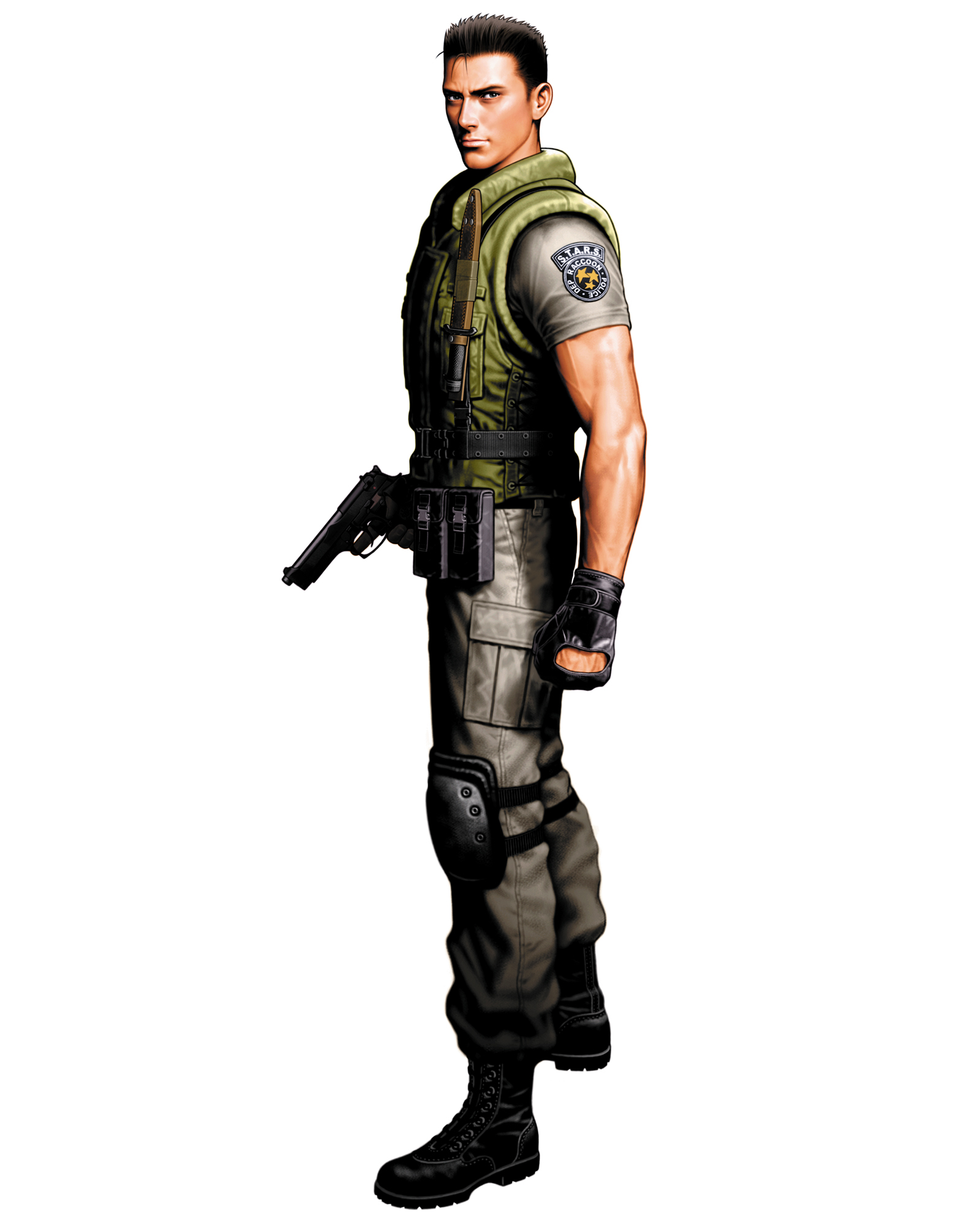Chris redfield from resident evil on the playstation 1:

Chris on the very first resident evil is a good example of representation, following the principle of how the polygon count of the playstation 1 gave a large emphasis on what had to be represented via texture as opposed to being made in 3d on top of what is already there. This style of character design i prefer with horror games as because the polygon count was so low they couldn't give him extra features such as muscles, thus making the player feel more vulnerable due to how "weedy" their character looks in game.
Chris Redfield, Resident evil 5 on ps3/xbox 360

With most modern games representation isn't as much of an issue due to the designers being able to simply create whatever they want for a character thanks to modern technology, I personally feel that the challenge in most modern character designs is to keep the character recognisable due to a large fan following a game like resident evil has behind it, thus culture plays a large roll in the development of most characters. Things that would normally be textured in can now be created in full 3d to accompany an existing character.
old interactive environment
Resident evil, Playstation 1

again due to limitations within the hardware games such as resident evil were somewhat forced to put the player in a claustrophobic environment, ironically i personally find that small thin hallways are a lot scarier than games that give you too much freedom of movement, as the fixed camera angles also helped to create a terrifying atmosphere taking full advantage of what you don't see and forcing you to see things you may have chosen to overlook if you were given the freedom to do so.
Amnesia : the dark descen, PC

Normally with this sort of c.s i would compare a modern game that does not utilise old techniques, But in this case i find that Frictional games did an amazing job with keeping old principles of horror games, i personally find that they kept the golden rule of isolation and claustrophobia by putting the player within a small close quarters environment for a large majority of the game, with these sort of settings the developers can take full advantage of factors like sound, lighting and various other horror tactics that older games had to represent as opposed to showing you, if something was happening that the developers couldn't show you due to limitations, they would have to use sound instead etc.
Atmosphere in video games
Abstract
The video game heritage is being preserved especially on the Web: comments, screenshots,
sounds, videos, etc. But one important element is missing: the environment in which we play
(game atmosphere) is one of our strongest memories. This article describes an investigationbased
method to record game atmospheres, the four atmospheres we are archiving (one bedroom,
one living room, and two game room atmospheres), the interactions allowed in these virtual
environments, and some technical points about how to access these atmospheres (on the Web or
thanks to a virtual reality system).virtual environments allow:
• immersion (if we use an immersive system),
• exploration (we discover the atmosphere),
• object manipulations (catching a cartridge, pushing a button, etc.)• getting information (accessing knowledge)
http://www.utc.fr/~nesposit/publications/esposito2005atmospheres.pdf
an interesting report on video game atmospheres but is not the exact subject matter i'm using, some valid key points are used however.